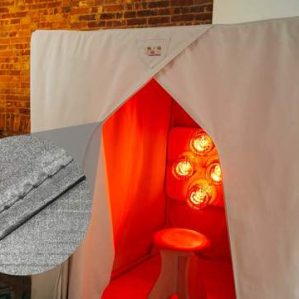What You Need To Know About Earthing – Understanding the Simplicity of Grounding and the 8 Most Incredible Health Benefits
The Health Benefits of Earthing: A Comprehensive Guide
Overview

In recent years, scientific research has started to explore and validate the potential health benefits of earthing, ranging from reduced inflammation to improved sleep. This article delves into the various health benefits of earthing.
A Brief History of Earthing
Earthing, or grounding, is the practice of making direct physical contact with the Earth’s surface, typically through walking barefoot on natural terrain or using grounding devices indoors. While it has gained popularity in recent decades, the concept of earthing is deeply rooted in human history, connecting us to the practices of our ancestors and their relationship with the natural world.
- Ancient Roots
The idea of earthing is not new; it is a practice that can be traced back to ancient civilizations. For much of human history, people lived in close contact with the Earth. Early humans walked barefoot or with simple footwear made of natural materials, which allowed them to maintain a direct connection with the ground. This natural connection was considered essential for physical and spiritual well-being.
Cultural Practices:
- Indigenous Traditions: Many indigenous cultures across the world have traditions and rituals centered around the Earth. For example, Native American tribes often performed ceremonies barefoot to maintain their connection with the Earth’s energy, believing it grounded them spiritually and physically.
- Eastern Medicine: In Traditional Chinese Medicine (TCM), the concept of Qi, or life energy, is central to health. Walking barefoot on the earth was believed to enhance the flow of Qi and maintain balance within the body.
As human societies advanced, the connection to the Earth diminished. The development of synthetic materials for shoes, the rise of urban environments, and the advent of modern lifestyles led to an increasing separation from the natural world. Rubber and plastic-soled shoes became standard, insulating us from the Earth’s natural electric charge.
Key Developments:
- Urbanization: The shift from rural, agrarian lifestyles to urban living resulted in less time spent outdoors in natural environments. Modern buildings, cars, and synthetic materials further disconnected people from the Earth.
- Technological Advances: The rise of technology and modern conveniences, while improving the quality of life in many ways, contributed to a lifestyle that often lacks direct contact with nature.
- The Modern Rediscovery
The modern concept of earthing was popularized in the late 20th and early 21st centuries. The practice gained attention through the work of researchers and advocates who explored the health benefits of reconnecting with the Earth’s energy.
Key Figures:
- Clint Ober: A pivotal figure in the modern earthing movement, Clint Ober, a former cable TV executive, began researching the effects of grounding in the late 1990s. He theorized that just as electrical systems are grounded for safety, the human body might benefit from grounding as well. Ober’s research led to the development of grounding products and the publication of his book, Earthing: The Most Important Health Discovery Ever?, co-authored with Stephen Sinatra and Martin Zucker.
- Scientific Research: Over the past two decades, studies have been conducted to investigate the potential health benefits of earthing, including its effects on inflammation, sleep, pain, and stress. This research has been published in various scientific journals, bringing greater legitimacy to the practice.
- Earthing in the 21st Century
Today, earthing is embraced by a growing number of people around the world as a simple, natural way to improve health and well-being. The practice is supported by a combination of anecdotal evidence, scientific research, and the increasing desire to reconnect with nature in a world dominated by technology.
Modern Applications:
- Grounding Products: The development of grounding products, such as mats, sheets, and shoes, has made it easier for people to practice earthing, even in indoor environments.
- Holistic Health Movement: Earthing has become part of the broader holistic health movement, which emphasizes natural, integrative approaches to health and wellness.
The history of earthing reflects a timeless human connection to the Earth that has been rediscovered in modern times. While ancient cultures understood the importance of staying connected to the Earth, it took the challenges of modern life to remind us of the benefits of grounding. As more research emerges, earthing continues to gain recognition as a valuable practice for enhancing health and well-being in the 21st century.
Understanding Earthing as a Natural Health Routine
Earthing, also known as grounding, is the practice of making direct physical contact with the Earth’s surface, such as by walking barefoot on grass, sand, or soil. This practice is based on the premise that the Earth’s surface is charged with a natural electric energy that can be absorbed by the human body, leading to various health benefits. As modern lifestyles increasingly separate people from nature, earthing is gaining attention as a simple, natural method for improving health and well-being.
- The Concept of Earthing
The idea of earthing is rooted in the understanding that the Earth’s surface carries a negative electric charge, abundant in free electrons. These electrons are thought to be beneficial to human health by acting as antioxidants that neutralize harmful free radicals in the body. By directly connecting to the Earth, the body can absorb these electrons, leading to various physiological benefits.
Scientific Basis:
- Electrical Conductivity: The human body is conductive, meaning it can absorb and transfer electrons. When in contact with the Earth, electrons are absorbed, which can help to balance the body’s electrical charge and reduce electrical imbalances.
- Oxidative Stress: Oxidative stress, caused by an excess of free radicals, is linked to chronic inflammation and many health conditions, including heart disease, diabetes, and cancer. The electrons absorbed through earthing may help neutralize these free radicals, thereby reducing oxidative stress.
- Health Benefits of Earthing
Research into earthing has revealed a variety of potential health benefits, making it an attractive addition to a natural health routine. Some of the most notable benefits include:
Reduction of Inflammation:
- Inflammation is the body’s natural response to injury or infection, but chronic inflammation is linked to numerous diseases. Studies suggest that earthing can reduce markers of inflammation in the body. For instance, a study published in the Journal of Alternative and Complementary Medicine found that grounding reduced blood levels of C-reactive protein (CRP), a marker of inflammation.
Improved Sleep Quality:
- Earthing has been associated with better sleep quality, likely due to its effects on the body’s circadian rhythm and cortisol levels. A study published in the Journal of Environmental and Public Health reported that participants who slept grounded experienced significant improvements in sleep, including quicker sleep onset and fewer nighttime awakenings.
Enhanced Mood and Stress Reduction:
- By balancing the autonomic nervous system and shifting it from a state of sympathetic dominance (fight or flight) to parasympathetic dominance (rest and digest), earthing can help reduce stress and anxiety. This calming effect on the nervous system can lead to an improved mood and overall sense of well-being.
Pain Relief:
- Many people who practice earthing report reductions in pain, particularly in conditions such as arthritis and muscle soreness. This pain relief is likely due to the anti-inflammatory effects of earthing, as well as improved blood flow and circulation.
Cardiovascular Health:
- Emerging research suggests that earthing may benefit heart health by improving blood flow and reducing blood viscosity. Lower blood viscosity reduces the risk of clot formation, which is a key factor in preventing heart attacks and strokes.
- How to Incorporate Earthing into Your Daily Routine
Incorporating earthing into your daily routine is simple and requires minimal effort or equipment. Here are some practical ways to practice earthing:
Outdoor Earthing:
- Walk Barefoot: The most straightforward way to practice earthing is by walking barefoot on natural surfaces like grass, sand, or soil. Aim to spend at least 20-30 minutes barefoot each day to experience the potential benefits.
- Gardening: Working in the garden with your hands in direct contact with the soil is another effective way to connect with the Earth.
- Outdoor Yoga or Meditation: Practicing yoga or meditation outdoors on grass or sand can enhance the benefits of these practices by incorporating earthing.
Indoor Earthing:
- Grounding Mats: Grounding mats or pads are designed to be used indoors, providing a way to connect with the Earth’s energy even when you are inside. These mats can be placed under your feet while sitting or lying down.
- Grounding Sheets: Grounding sheets are used on beds, allowing you to sleep grounded. These sheets are connected to a grounding rod outside or a grounded outlet, simulating the effect of sleeping on the Earth.
- Scientific Research on Earthing
While earthing has ancient roots, modern science is beginning to explore and validate its benefits. Some of the key studies include:
- “The Effect of Grounding (Earthing) on Human Physiology: A Review of the Literature” published in the Journal of Environmental and Public Health in 2012, discusses various physiological effects of earthing, including its impact on sleep, pain, stress, and inflammation.
- “Earthing: Health Implications of Reconnecting the Human Body to the Earth’s Surface Electrons” published in the Journal of Alternative and Complementary Medicine, examines the potential health benefits of earthing and suggests that it could play a role in reducing the global burden of chronic inflammation.
- “The Biological Effects of Grounding the Human Body During Sleep as Measured by Cortisol Levels and Subjective Reporting of Sleep, Pain, and Stress” published in the Journal of Alternative and Complementary Medicine, explores how earthing during sleep can affect cortisol levels, a key hormone in the body’s stress response.
- Earthing and Holistic Health
Earthing fits well into a holistic approach to health, which emphasizes the interconnectedness of the body, mind, and environment. By reconnecting with the Earth, earthing can complement other natural health practices such as yoga, meditation, and a healthy diet.
Integrating Earthing with Other Practices:
- Yoga and Meditation: Practicing yoga or meditation outdoors enhances grounding effects, promoting relaxation and stress relief.
- Mindful Walking: Combine earthing with mindful walking to deepen your connection with nature and reduce stress.
- Detoxification: Earthing may support natural detoxification processes by reducing oxidative stress and inflammation.
Earthing is a simple, natural health routine that offers a range of potential benefits, from reducing inflammation and improving sleep to enhancing mood and relieving pain. While modern lifestyles often disconnect us from nature, incorporating earthing into your daily routine can help restore this connection and improve overall well-being. Whether through walking barefoot outdoors or using grounding devices indoors, earthing is a practice that is accessible to everyone and can be easily integrated into a holistic health regimen.
The Health Benefits of Grounding
- Reduction in Inflammation
Inflammation is the body’s natural response to injury or infection, but chronic inflammation can lead to various diseases, including cardiovascular disease, diabetes, and cancer. One of the most well-documented benefits of earthing is its ability to reduce inflammation.
Studies have shown that grounding can decrease markers of inflammation in the body. For example, a study published in the Journal of Alternative and Complementary Medicine found that grounding for just 30 minutes significantly reduced blood levels of inflammation-related molecules, including C-reactive protein (CRP).
The reduction in inflammation is believed to occur because earthing allows the body to absorb free electrons from the Earth, which act as antioxidants. These electrons neutralize free radicals in the body, thereby reducing oxidative stress and inflammation.
- Improved Sleep Quality
Quality sleep is essential for overall health and well-being, yet many people struggle with sleep disorders, including insomnia. Earthing has been shown to improve sleep quality, likely due to its effects on the body’s circadian rhythm and cortisol levels.
A pilot study conducted by the Journal of Environmental and Public Health found that participants who slept grounded reported significant improvements in sleep quality, including reduced time to fall asleep and fewer awakenings during the night. The study also noted that grounding normalized cortisol levels, a hormone that plays a crucial role in the sleep-wake cycle.
This improvement in sleep quality can have far-reaching effects, including enhanced mood, better cognitive function, and a lower risk of chronic diseases.
- Enhanced Mood and Stress Reduction
Chronic stress and anxiety are prevalent in today’s fast-paced world, contributing to a host of physical and mental health issues. Earthing has been shown to have a calming effect on the nervous system, which can lead to reduced stress levels and improved mood.
Research has indicated that grounding can help balance the autonomic nervous system by shifting it from a state of sympathetic dominance (fight or flight) to parasympathetic dominance (rest and digest). This shift can lead to a reduction in stress and anxiety, as well as a sense of overall well-being.
A study published in the Journal of Alternative and Complementary Medicine found that grounding significantly reduced feelings of stress, anxiety, and depression in participants after just one hour of contact with the Earth.
- Better Cardiovascular Health
Cardiovascular disease remains one of the leading causes of death worldwide. Emerging research suggests that earthing may benefit heart health by improving blood flow, reducing blood viscosity, and lowering blood pressure.
A study conducted by Gaétan Chevalier, PhD, and published in the Journal of Alternative and Complementary Medicine, demonstrated that grounding significantly reduced blood viscosity, which is a known risk factor for cardiovascular disease. The study suggested that grounding enhances the zeta potential of red blood cells, preventing them from clumping together and improving overall circulation.
Additionally, grounding has been linked to a reduction in blood pressure. Although more research is needed in this area, preliminary findings suggest that earthing may help regulate blood pressure by promoting relaxation and reducing stress levels.
- Accelerated Wound Healing
The body’s ability to heal wounds is essential for recovery from injuries and surgeries. Grounding has shown promise in accelerating the wound healing process, likely due to its anti-inflammatory effects.
In a case study published in the Journal of Inflammation Research, a patient with a chronic non-healing wound experienced rapid healing after incorporating grounding into their treatment regimen. The study authors hypothesized that the influx of electrons from the Earth helped reduce inflammation and promote tissue repair.
While more extensive clinical trials are needed to confirm these findings, the potential for grounding to enhance wound healing is a promising area of research.
- Pain Relief
Chronic pain is a common and debilitating condition that affects millions of people worldwide. Earthing has been reported to provide significant pain relief, particularly for those suffering from conditions like arthritis, back pain, and muscle soreness.
A study published in the Journal of Alternative and Complementary Medicine found that grounding reduced pain and improved the range of motion in patients with chronic pain conditions. The researchers concluded that earthing’s ability to reduce inflammation and improve blood flow likely contributes to its pain-relieving effects.
In addition to reducing physical pain, grounding may also alleviate emotional pain by promoting relaxation and reducing stress levels.
- Improved Immune Function
A robust immune system is crucial for protecting the body against infections and diseases. Some research suggests that grounding may enhance immune function by reducing stress and inflammation, both of which can weaken the immune system.
A study published in the Journal of Environmental and Public Health found that grounding significantly increased white blood cell counts in participants, indicating a potential boost to the immune system. The study authors theorized that the influx of electrons from the Earth may help support immune function by neutralizing free radicals and reducing oxidative stress.
- Hormonal Balance
Hormonal imbalances can lead to a variety of health issues, including mood swings, weight gain, and fatigue. Grounding has been shown to have a positive effect on hormonal balance, particularly in regulating cortisol levels.
As previously mentioned, grounding can normalize cortisol levels, which play a key role in the body’s stress response and sleep-wake cycle. By helping to regulate cortisol, earthing may contribute to hormonal balance, leading to improved mood, better sleep, and overall well-being.
Risk and Safety Considerations of Earthing
Earthing, or grounding, involves making direct contact with the Earth’s surface to potentially benefit from its electrical charge. While earthing is generally considered safe and has gained popularity for its purported health benefits, it’s essential to understand the potential risks and safety considerations associated with this practice. This article explores these aspects, providing a balanced view of earthing’s safety profile.
- Electrical Safety
One of the primary concerns with earthing, especially when using grounding devices indoors, is the risk of electrical shock. Grounding devices typically involve connecting to the Earth via a grounding rod, conductive sheets, or mats that plug into a grounded outlet.
Key Considerations:
- Improper Installation: If grounding devices are not correctly installed, they can become conduits for electrical currents from the building’s electrical system, especially in the event of a short circuit. This risk underscores the importance of using high-quality, certified grounding products and following the manufacturer’s instructions carefully.
- Lightning Strike Risk: Another potential risk is during thunderstorms. A grounding rod or device connected to the Earth could theoretically attract lightning or conduct electricity from a lightning strike. However, this risk is minimal and comparable to the risk posed by any grounded electrical system.
Recommendations:
- Always consult a professional if you are unsure about installing or using a grounding device.
- Avoid using grounding devices during thunderstorms, particularly if they are connected to a grounded outlet or external grounding rod.
- Infection Risk
Traditional earthing practices, such as walking barefoot outdoors, can expose individuals to harmful pathogens and parasites.
Key Considerations:
- Exposure to Contaminants: Walking barefoot in certain environments, such as parks or beaches, can increase the risk of coming into contact with bacteria, fungi, or parasites. Contaminated soil can harbor pathogens like hookworms or tetanus spores.
- Cuts and Injuries: Walking barefoot increases the likelihood of cuts, punctures, or injuries, which can become infected if not properly treated. This risk is higher in urban areas with potential hazards like broken glass, sharp objects, or other debris.
Recommendations:
- Be mindful of where you practice outdoor earthing. Choose clean, safe environments like your backyard or a well-maintained park.
- Consider washing your feet after outdoor earthing sessions and treating any cuts or injuries promptly.
- Allergic Reactions
Some individuals might experience allergic reactions to certain types of soil, grass, or other natural elements during outdoor earthing.
Key Considerations:
- Grass Allergies: Those with grass allergies may experience symptoms such as itching, redness, or hives after direct contact with grass. Similarly, some people may be allergic to insect bites or stings that could occur during outdoor earthing. Grass sprayed with chemicals could also be hazardous to your health as these chemicals tend to be carcinogens.
- Skin Sensitivities: Grounding products, such as mats or sheets, may contain materials that could cause skin irritation or allergic reactions in sensitive individuals.
Recommendations:
- If you have known allergies to grass, pollen, or insects, take precautions such as earthing in areas where these allergens are minimized or using grounding products indoors.
- For grounding products, opt for hypoallergenic options and discontinue use if you notice any skin irritation.
- Over-Reliance on Earthing
While earthing offers several potential health benefits, there is a risk of individuals relying too heavily on it as a substitute for medical treatment or other essential health practices.
Key Considerations:
- Delaying Medical Treatment: Some people may overestimate the benefits of earthing and delay seeking professional medical advice for serious health conditions. This could lead to worsening of symptoms or missed diagnoses.
Recommendations:
- View earthing as a complementary health practice rather than a replacement for medical treatment. Always consult with a healthcare provider for any health concerns.
- Psychological Considerations
For some individuals, the belief in earthing’s benefits may lead to a placebo effect, where perceived health improvements are due to expectations rather than the practice itself. Conversely, skepticism or anxiety about the practice may lead to a nocebo effect, where individuals believe they are experiencing adverse effects due to negative expectations.
Key Considerations:
- Placebo/Nocebo Effect: Psychological factors can significantly influence how individuals perceive the effects of earthing. Belief in the practice’s efficacy might lead to perceived improvements, while skepticism might lead to the opposite.
Recommendations:
- Maintain a balanced perspective on earthing. While it may offer benefits, it’s essential to approach it with an open but critical mind, acknowledging both the potential benefits and limitations.
Grounding is generally a safe practice when done with proper precautions, but it is not without its risks. Electrical safety, exposure to pathogens, allergic reactions, and psychological factors should all be considered when incorporating earthing into your wellness routine. By taking appropriate measures, such as using certified grounding devices, choosing safe environments for outdoor earthing, and consulting with a healthcare provider, you can minimize these risks and enjoy the potential benefits of connecting with the Earth’s energy.
How to Practice Earthing
Earthing, or grounding, is a simple practice that involves making direct contact with the Earth’s surface to absorb its natural energy. This practice can help reduce inflammation, improve sleep, lower stress, and offer other health benefits. With a variety of ways to incorporate earthing into daily life, it’s easy to start reaping the benefits regardless of your location or lifestyle.
- Outdoor Earthing Techniques
The most traditional and effective way to practice earthing is to make direct physical contact with the Earth while outdoors. Here are some popular outdoor earthing techniques:
Walking Barefoot:
- Grass: Walking barefoot on grass is one of the simplest and most effective ways to practice earthing. Find a park, garden, or lawn and spend 20-30 minutes walking or standing barefoot. Caution, if your grass is sprayed with chemicals such as Round-up or any other herbicides, I strongly recommend not walking barefoot on the grass. Those chemicals are known carcinogens.
- Sand: If you live near a beach, walking barefoot on the sand is an excellent way to ground yourself. Wet sand is particularly conductive, enhancing the benefits of earthing.
- Soil: For those with a garden, walking or standing barefoot on soil provides a direct connection to the Earth’s electrons. Gardening with your hands in the soil can also enhance the earthing experience.
Sitting or Lying on the Ground:
- Picnics: Sitting or lying on the grass during a picnic allows you to stay grounded while enjoying the outdoors.
- Meditation or Yoga: Practicing meditation or yoga outdoors on natural surfaces, such as grass or sand, can enhance the grounding effects while promoting relaxation and mindfulness.
Water Contact:
- Swimming in Natural Water Bodies: Swimming in natural bodies of water like lakes, rivers, or the ocean provides excellent grounding as water is a good conductor of electricity. Wading in shallow water or standing at the edge of a body of water with your feet submerged can also be effective.
- Indoor Grounding Techniques
For those who may not have easy access to outdoor spaces, indoor earthing methods can provide an alternative way to stay connected to the Earth’s energy.
Grounding Mats:
- Under the Feet: Grounding mats can be placed under your feet while sitting at a desk, watching TV, or even standing in the kitchen. These mats are designed to simulate the effect of standing on the Earth, as they connect to a grounded outlet or a grounding rod outside.
- Sleeping: Using a grounding mat on your bed can help you stay grounded while you sleep. This is especially beneficial for those who want to maximize their earthing practice during the night.
Grounding Sheets and Pillowcases:
- Sleep Grounded: Grounding sheets and pillowcases are made with conductive materials and can be used on your bed. These are connected to a grounded outlet or rod, allowing you to absorb the Earth’s energy while you sleep.
Grounding Patches:
- Targeted Grounding: Grounding patches are small adhesive patches that can be placed on specific areas of the body, such as the feet or legs. These patches are connected to a grounding wire and are useful for targeting pain or inflammation in specific areas.
Grounding Shoes:
- Conductive Footwear: Grounding shoes are designed with conductive materials that allow you to stay grounded while walking on various surfaces, including concrete or pavement. These shoes are particularly useful for people who spend a lot of time outdoors in urban environments.
- Tips for Effective Grounding
To maximize the benefits of earthing, consider the following tips:
Consistency is Key:
- Daily Practice: Aim to practice earthing daily, even if only for a few minutes. Consistency can help you maintain the health benefits associated with grounding.
Choose Natural Surfaces:
- Best Surfaces for Earthing: Natural surfaces like grass, sand, soil, and water are the most effective for grounding. Asphalt, concrete, and synthetic materials like rubber or plastic are not conductive and do not provide the same benefits.
Be Mindful of the Environment:
- Safety Considerations: When practicing earthing outdoors, be mindful of your surroundings. Avoid areas where there may be sharp objects, animal waste, or pesticides. Choose clean, safe areas to walk barefoot.
Combine with Other Practices:
- Holistic Approach: Combine earthing with other wellness practices, such as yoga, meditation, or mindful walking, to enhance the overall benefits for your body and mind.
- Scientific Research and Benefits
While earthing is a simple practice, it is supported by scientific research that highlights its potential health benefits. Studies have shown that grounding can help reduce inflammation, improve sleep, lower stress, and even enhance cardiovascular health. Incorporating earthing into your daily routine can be a natural and effective way to improve your overall well-being.
Key Studies:
- Cortisol Reduction: A study published in the Journal of Alternative and Complementary Medicine found that grounding during sleep can normalize cortisol levels, a key stress hormone, leading to better sleep and reduced stress.
- Inflammation Reduction: Research published in the Journal of Environmental and Public Health indicates that grounding can reduce inflammation markers in the body, potentially lowering the risk of chronic diseases.
Earthing is a simple, natural practice that can be easily incorporated into your daily routine. Whether you choose to walk barefoot on grass, use grounding mats indoors, or combine grounding with other wellness practices, the benefits of connecting with the Earth are accessible to everyone. By making earthing a regular part of your life, you can improve your health, reduce stress, and enhance your overall sense of well-being.
After Thoughts
Earthing is a simple, natural practice that offers a wide range of potential health benefits, from reducing inflammation and improving sleep to enhancing mood and supporting cardiovascular health. While more research is needed to fully understand the mechanisms behind these benefits, the existing evidence suggests that grounding can be a valuable addition to a holistic approach to health and wellness.
Whether walking barefoot on natural surfaces or using grounding devices, incorporating grounding into your daily routine may help you connect with the Earth’s healing energy and improve your overall well-being.
Stop the pain and sleep better when you start incorporating EASE Magnesium Spray into your daily health regimen to help start enjoying its health benefits and experience revitalized optimal health.
For natural and healing remedies, products, and supplements to help you live your most optimal healthy life, visit our store here!
Remember: Own Your Health!
If you enjoyed the information presented in this article, Please Share It. Help us reach more people and keep this website going! Thank you!
Note: The information provided in this article is for educational purposes only and should not be considered medical advice. Please consult with a healthcare professional or registered dietitian before making any significant changes to your diet or lifestyle.
Earthing (Grounding) Frequently Asked Questions
- What is Earthing or Grounding?
Earthing or grounding refers to the practice of making direct physical contact with the Earth’s surface, either by walking barefoot outdoors or using indoor grounding devices. The idea is to connect with the Earth’s natural electric charge, which may help to stabilize the body’s bioelectrical systems.
- How Does Earthing Work?
The Earth has a natural, subtle electric charge. When you are in direct contact with the Earth, free electrons from the ground may transfer into your body. These electrons are believed to have antioxidant effects that help neutralize free radicals and reduce inflammation, among other benefits.
- What Are the Health Benefits of Earthing?
Some of the reported health benefits of earthing include:
- Reduced Inflammation: Grounding may lower inflammation markers, which can reduce chronic pain and improve overall health.
- Improved Sleep: Grounding during sleep has been shown to normalize cortisol levels, leading to better sleep quality.
- Stress Reduction: Direct contact with the Earth may help lower stress levels by stabilizing the body’s stress hormones.
- Enhanced Mood: Many people report feeling more relaxed and balanced after grounding, potentially due to the reduction in stress and inflammation.
- Cardiovascular Benefits: Some research suggests grounding can improve blood flow and heart rate variability, supporting cardiovascular health.
- How Can I Practice Earthing?
There are several ways to practice earthing:
- Walking Barefoot: Walk barefoot on natural surfaces like grass, sand, or soil for at least 20-30 minutes daily.
- Grounding Mats: Use grounding mats or pads while sitting, standing, or sleeping indoors. These devices connect to the ground through a grounded outlet or rod.
- Grounding Sheets: Sleep on grounding sheets made of conductive materials that connect to a grounded outlet.
- Swimming: Swim or wade in natural bodies of water such as lakes, rivers, or the ocean.
- Is Earthing Safe?
For most people, earthing is safe when practiced appropriately. However, there are a few considerations:
- Avoid Hazardous Areas: When practicing earthing outdoors, avoid areas that may have sharp objects, animal waste, or chemicals like pesticides.
- Use Certified Devices: If using grounding devices indoors, ensure they are certified and connected properly to avoid electrical hazards.
- Consult a Healthcare Provider: If you have any health conditions, especially related to heart or blood, consult your healthcare provider before starting earthing, especially if using grounding devices.
- How Long Should I Ground Each Day?
The duration of grounding can vary depending on individual needs and preferences. Many experts recommend starting with 20-30 minutes per day and increasing the time as desired. Some people benefit from longer sessions, particularly if they are managing chronic health conditions.
- Do I Need Special Equipment to Practice Earthing?
No special equipment is required to practice earthing outdoors—simply walk barefoot on natural surfaces. However, if you prefer to practice earthing indoors, grounding mats, sheets, and patches are available. These devices allow you to ground while inside, often while sleeping, sitting, or working.
- Can I Ground on Concrete or Asphalt?
Concrete, especially if it’s unsealed, is somewhat conductive and may allow for grounding, but it is not as effective as natural surfaces like grass or soil. Asphalt, on the other hand, is not conductive and does not provide grounding benefits.
- What Are the Risks of Earthing?
Earthing is generally considered safe, but there are a few risks to be aware of:
- Electrical Safety: When using grounding devices indoors, ensure they are properly grounded to avoid electrical shocks.
- Environmental Hazards: Be cautious of environmental hazards like sharp objects, animal waste, or chemicals when grounding outdoors.
- What Does the Science Say About Earthing?
While earthing has been practiced for centuries, modern scientific research is still in its early stages. Some studies suggest that grounding can reduce inflammation, improve sleep, and lower stress levels. However, more research is needed to fully understand the mechanisms and validate the long-term health benefits of earthing.
Key Studies:
- Journal of Environmental and Public Health: Research suggests that grounding can reduce inflammation and improve health by restoring the body’s natural electrical state.
- Journal of Alternative and Complementary Medicine: Studies have found that grounding during sleep can normalize cortisol levels and improve sleep quality.
- Can Earthing Help with Specific Health Conditions?
Many people report relief from conditions such as chronic pain, insomnia, and stress through regular earthing practices. While there is anecdotal evidence and some supportive studies, earthing should not replace conventional medical treatment. It can be used as a complementary practice alongside traditional therapies.
- How Can I Measure the Effectiveness of Earthing?
The effectiveness of earthing can be subjective, varying from person to person. Some individuals may notice immediate benefits, while others may need more time. Keeping a journal of your symptoms and experiences before and after starting earthing can help track changes in sleep, pain levels, and overall well-being.
References
- Gaétan Chevalier, PhD, et al. (2015). “The Effect of Grounding (Earthing) on Human Physiology: A Review of the Literature.” Journal of Environmental and Public Health.
- Oschman, J. L., Chevalier, G., & Brown, R. (2015). “The Effects of Grounding on Inflammation, the Immune Response, Wound Healing, and Prevention and Treatment of Chronic Inflammatory and Autoimmune Diseases.” Journal of Inflammation Research.
- Ghaly, M., & Teplitz, D. (2004). “The Biological Effects of Grounding the Human Body During Sleep as Measured by Cortisol Levels and Subjective Reporting of Sleep, Pain, and Stress.” Journal of Alternative and Complementary Medicine.
- Sinatra, S. T. (2013). “The Effect of Earthing (Grounding) on Human Physiology.” Journal of Environmental and Public Health.
- Sokal, P., & Sokal, K. (2011). “Earthing the Human Body Influences Physiologic Processes.” Journal of Alternative and Complementary Medicine.
- Chevalier, G., Sinatra, S. T., & Oschman, J. L. (2012). “Earthing: Health Implications of Reconnecting the Human Body to the Earth’s Surface Electrons.” Journal of Environmental and Public Health.
- Oschman, J. L. (2007). “Can Electrons Act as Antioxidants? A Review and Commentary.” Journal of Alternative and Complementary Medicine.
- Gaétan Chevalier, PhD, et al. (2012). “The Effect of Grounding (Earthing) on Human Physiology: A Review of the Literature.” Journal of Environmental and Public Health.
- Ober, C., Sinatra, S. T., & Zucker, M. (2010). Earthing: The Most Important Health Discovery Ever? Basic Health Publications.






























0 Comment